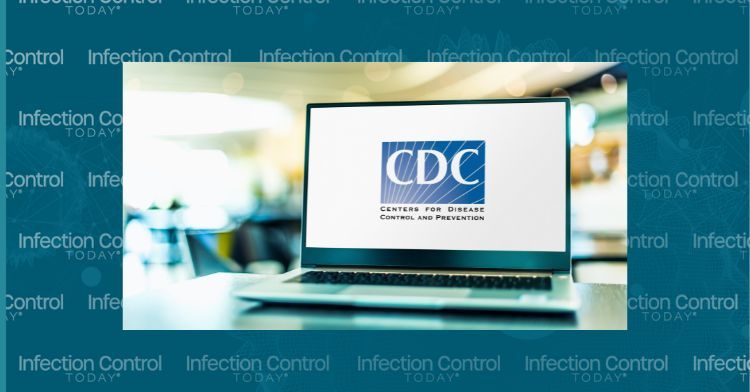CDC Strategies Preventing Hospital-Onset C difficile Effectiveness Inconclusive in Testing
Hospitals using CDC prevention strategies had different incidences of hospital-associated Clostridioides difficile infection compared to those that didn't, but the reasons are not necessarily the strategies themselves.
CDC on a laptop
(Adobe Stock unknown)

This story was first published by our sister brand, Contagion®Live.
Hospitals implementing the CDC Strategies Framework1 for preventing hospital-onset Clostridioides difficile infection (HO-CDI) demonstrated a more rapid reduction in incidence than the hospitals serving as controls in a quality improvement study.2 Still, the difference could not be attributed to the Framework's effectiveness.
"The 20 hospitals participating in the Framework had a steeper decline in HO-CDI incidence vs 26 nonparticipating hospitals, but implementation of the Framework was not temporarily associated with the decline," Nicholas Turner, MD, MHSc, Division of Infectious Diseases, Duke University Medical Center, Durham, North Carolina, and colleagues reported, suggesting with the "temporary" qualifier that the effect of the Framework could still be ascertained with further study.
"The incidence of HO-CDI was declining in participating hospitals before the intervention, and the rate of decline did not change during the intervention," the investigators explained.
The CDC Strategies to Prevent Clostridioides difficile infection in Acute Care Facilities Framework2 comprises 39 categories of interventions within 5 focal areas:
- Isolation and contact precautions
- CDI confirmation
- Environmental cleaning
- Infrastructure development
- Antimicrobial stewardship engagement
Turner and colleagues point out that although the recommendations within the Framework are evidence-based, clinical studies have not been conducted to assess its effectiveness. They conducted the present longitudinal quality improvement study with 20 intervention hospitals and 26 that did not implement the Framework from within the Duke Infection Control Outreach Network.
The intervention hospitals were guided through the implementation of the Framework from July 2019 through March 2022. The temporal trends of HO-CDI incidence were compared to those of the non-intervention, control hospitals and against baseline incidence in both hospital groups from July 2017 through June 2019. Cases of CDI were identified by a positive test for either toxin A/B assay or nucleic acid amplification from stool samples and determined to be hospital-onset if occurring after hospital day 3.
The Framework implementation was initiated with preventionists from each intervention hospital attending an in-person launch event, followed by monthly teleconference calls. Throughout the study period, the study group prepared and distributed 42 tools for dashboard, report, or web application to support implementation.
"While adoption of prevention measures across all Framework areas was strongly encouraged, each hospital exercised independent decision-making regarding which measures to implement, when implementation would occur, and how measures would be enacted," Turner and colleagues remarked.
Although the baseline pattern of decreasing incidence confounded analysis of the Framework effect, Turner and colleagues reported that the intervention hospitals had a steeper decline in HO-CDI incidence over time relative to controls (yearly incidence rate ratio [IRR], 0.79 [95% CI, 0.67-0.94]). However, the baseline rate of decline did not change with the implementation of the Framework strategies.
The investigators did find that "the degree to which hospitals implemented the Framework" was associated with steeper declines in HO-CDI incidence. In addition to distinguishing the degree of implementation, Turner and colleagues point to certain measures that appeared to be particularly useful.
"A few interventions—case reviews to identify areas for improvement, stewardship interventions targeting antibiotics with a high risk of CDI, and 2-step testing—showed potential benefit despite low anticipated power to detect such benefits," the investigators noted.
References
1. Centers for Disease Control and Prevention. CDI prevention strategies. November 23, 2018; Last reviewed, December 17, 2021. Accessed April 13, 2024.
https://www.cdc.gov/cdiff/clinicians/cdi-prevention-strategies.html.
2. Turner NA, Krishan J, Nelson A, et al. CDC's hospital-onset Clostridioides difficile prevention framework in a regional hospital network.JAMA Netw Open.2024 Mar 4; 7(3):e243846, doi:10.1001/jamanetworkopen.2024.3846. Accessed April 13, 2024.